South Island Part VI: Oamaru and Dunedin Stories and Visuals
This is the last of the South Island stories and photographs in this series (hopefully there will be more someday). I hope you enjoy.
It was the last leg of my journey before I’d head back to Wellington to take my last exam, and as I headed out of Te Anau I had the first fleeting sense of finality. The double-decker bus dropped the local children off at school along the way. When the “little snot noses,” as my uncle affectionately calls his own children, got off, it became instantly quiet. We continued in the morning peace to Gore. While on the way I had my first glimpse of a border collie herding sheep alongside the road. In Gore, we picked up some new travelers on the bus that would take me through Dunedin to Oamaru where I hoped to see the penguins nesting on the shore.
On the bus to Dunedin, I got to overhear a couple of older Aussies on holiday in New Zealand tell a young missionary who was on his way home about what had changed in the past two years in their native Queensland. The bus made a pit stop at a sheep station where I managed to take these pictures:
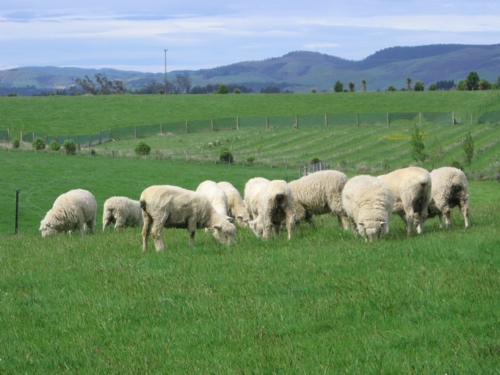
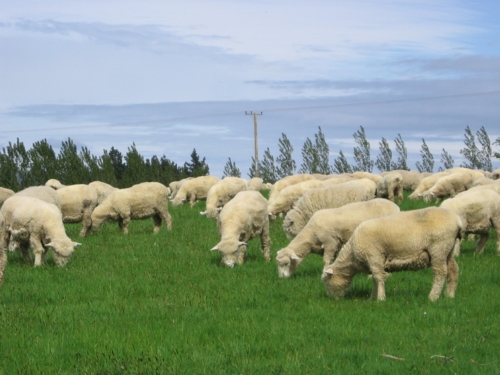


In Dunedin the bus dropped off the two older Aussies and picked up another missionary and a girl who was traveling alone for the first time. I normally don’t enjoy being proselytized and I also don’t like to witness other people be preached to, but I endured it until I finally moved to the lower level of the bus when I began to worry I might miss my stop. The driver assured me it was still another hour or more before we’d arrive, so I sat down next to a nice looking old woman, put my feet up on the seat in front of me and went to sleep.
The only photograph I took in Dunedin. Nice parking job, eh? I think I caught the woman mid-sneeze.

I woke up as we entered the town of Oamaru. It’s one of the oldest towns in New Zealand with a good number of buildings built of limestone in the 19th century. First on my list was to head down to the i-site to free my shoulders of their burden and ask about the penguins. I hadn’t checked ahead and it turned out the Penguins which nested on the peninsula in droves went out to sea during the day and returned around sundown. Unfortunately I was to catch a bus headed back to Dunedin sometime around 5pm, so sadly I was going to miss them as they amassed on the shores before the stadium seating built exclusively for penguin spectators.
“Sometimes a few of the penguins stay at their nests during the day,” the woman tried to reassure me.
I took a walk around town to see what there was to see. St. Luke’s Church was on the map of historic sites. As I walked around outside, one of the vicars who appeared to be Indian asked me smilingly if I’d like to take a look inside. He informed me that they had just had a funeral. The central room was one of the largest I’d seen in New Zealand. The roof was supported by arched timber and the walls by limestone buttresses outside. I took a look around inside at the stained glass, the sayings on the walls, evidence of a community united by faith.
As I was leaving, another vicar asked me if I had been inside, if I’d liked it. He was excited to share with me that his grandfather was the founder of this church.
St. Luke’s Church

I headed for the gallery that houses the work of New Zealand artists and local school children. Honestly, I thought the best artwork on display there was the artwork of the students.
I did some minor shopping, stopped to have a cup of coffee, served by an ex-pat Australian. I couldn’t finish because it was the most bitter cup of coffee I had ever had, and that’s saying something coming from a girl who likes her coffee black. Colombian, Costa Rican and Guatemalan brews are still the best in my mind.
I decided I’d try to see if I could see any of the penguins before the i-site closed. Unfortunately I saw nothing more than a man mowing a lawn and some graffiti on the side of a building. I tried desperately to take a picture of it but my camera battery had reached the end of its life, and try as I might I couldn’t coax it to hang on just a little longer, just one more picture. The graffiti expressed this: “I (heart) penguins!”
After I got my backpack, I found a shady spot on the hospital lawn under a cherry tree in full bloom. I studied for my exam, and when the clock chimed 4:45, I made my way to the bus stop and sat myself on the bench next to a nice old lady with a Reader’s Digest who was happy to watch my bags as I went to use the toilets.

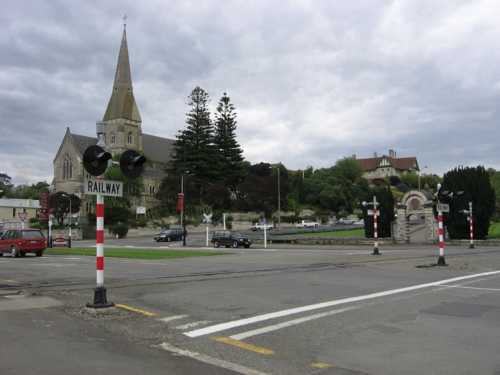
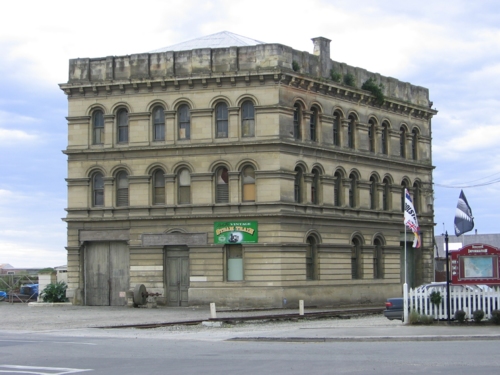
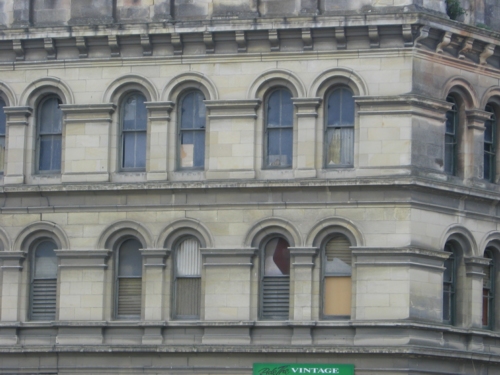
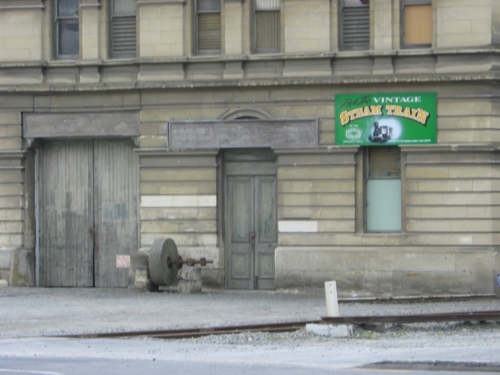
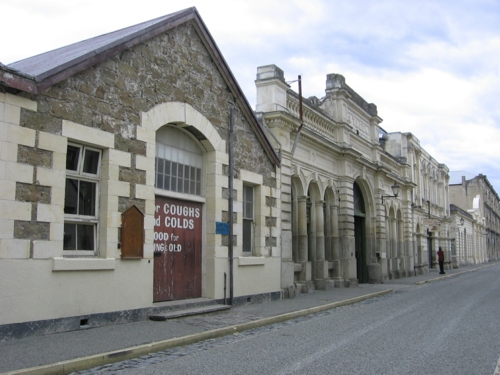


I arrived in Dunedin as the sun was setting, and made my way easily to the Octagon, but from there couldn’t find my hostel. I asked a couple that was walking by, and in an English accent the guy replied, “We’re not from here.” But he took a look at my map and pointed me in the right direction. The hostel was up a flight of stairs and through a door opened with a code. It was clean, comfortable and friendly like every other hostel I’d stayed in in New Zealand. I spent the night in where an Irish guy and I were the last two to make our dinner. He sat down at the table I had claimed, and we launched into conversation. We covered the usual topics: where are you from? What are you doing in New Zealand? How long have you been here? How long will you be here? He was an engineer who had gotten a job in Queenstown, a job that provided him with a car. We talked about the state of the roads. I told him how I was shocked by the fact that a “highway” in New Zealand was a two lane country road in the US. He told me, “You should come to Ireland! The roads there are worse!”
That evening I lay in my bed reading, and one of my bunkmates, a Korean as far as I can tell, sat on the floor next to her bed brushing her teeth. She would brush rapidly for about five strokes, take the brush out of her mouth, look at it, then brush rapidly again. She kept this up for a good fifteen minutes before I left to get a shower. Who knows how much longer she sat there engrossed in the cleanliness of her pearly whites, the enamel of which she had probably scrubbed off long ago. I spent about two minutes on my own teeth before I hit the sack.
The next morning I was up early, before anything was open. I sat in the Octagon with a cappuccino that had the same flavor as the cardboard cup it came in. But I soon grew cold in the shade, so I moved to a sun-soaked bench in front of the Cathedral. When the bells chimed ten, I got up and walked around two sides to where the art museum sat. I moseyed through a sculpture exhibit on the ground floor that to my un-symbolic eye looked like a bunch of donuts and hotdogs and dripping paint. Also on the first floor was an exhibit of Japanese art with an elementary school group in awe of their tour guide’s description of an eagle sculpture.
Following the visit to the museum was a tour of the Cadbury Chocolate Factory which I had booked as a package with a tour of Speight’s Brewery for about NZ$26. For the tour of the chocolate factory, the nice little woman who was our guide asked us to put on hair nets and then took us through the stages of chocolate production. She told us some statistics, and since I can’t remember the exact numbers I’ll do my best to make them up. “New Zealanders consume 25 kilos of chocolate every year. Aussies consume about 30. And I’m not sure how many Americans do,” she said looking at me, the only American.
“Probably a lot. But you guys have better mental health than we do,” an Australian woman offered.
“Do we?”
“That’s what I heard.”
“Interesting.”
Apparently also Cadbury, which is a British company, has a factory in Tasmania, and the Cadbury eggs we get in the US around Easter are produced by Hershey’s. This was all news to me.
The tour ended shortly after our guide took us into a silo that housed a chocolate waterfall. When she turned on the machine, a great rumble echoed from the round walls, followed by a deafening noise as chocolate cascaded two floors below, caught in a large metal container and cycled back up to the top. She turned the machine off.
“Wow,” one woman said.
Our guide told us that they had designed the chocolate waterfall to wow the important people who would be coming to the factory’s opening several decades ago. There was one design flaw, however, so when the machine was turned on for the first time, all those important people found themselves coated with chocolate. Since then, they have installed a catch to funnel the chocolate down rather than allowing it to spill every which way it pleases.
We walked down the spiral staircase still covered in chocolate, and headed out, with our bags of chocolate that we had collected on the tour. I had never before heard of a Curly Wurly, or a Moro Bar or a Perky-Nana, or any of the other trademark chocolates Cadbury produces. Then again, I have to admit it’s not really a pity because, although I wouldn’t go so far as to agree with her choice of words, my Danish friend Camilla reminded me everyday, “it’s crap.” My opinion of it? It’s a good chocolate when you need a chocolate fix.
After the chocolate tour, I headed out to try and find Speight’s brewery without a map. Now Speight’s, that’s the beer to get if you’re on a budget and you like a good pilsner. I headed off in the right direction, and turning down a street found myself climbing a ramp I wasn’t supposed to climb. At the top, I got a good view of the area, and I caught a good glimpse of a smoke stack a couple blocks away with a barrel at the top. That must be it! I headed back down the ramp and around to where I had seen the barrel. Sure enough, there was Speight’s.
The tour group consisted of about thirty people, five of whom were women. The tour started with a bit of beer history. Apparently the term “boozer,” came from the ancient Egyptian’s word for beer.
“Do you say that in America?” Again I was the only, the novelty American.
“Say what?”
“Boozeh? B-o-o-z-e-h?”
“Well, not usually. We’ll say booze sometimes, or booz-er.”
“What do you usually say?”
“He’s a drunk?”
“Oh ok, anyway… James Cook kept his men from developing scurvy by brewing a crude sort of beer, the taste of which was not recorded.”
We continued through the brewery and distillery, our guide pointing out all the processes along the way. So this is what my immigrant ancestors used to do at their brewery and distillery in Greensburg, Pennsylvania? I wonder what they did with all that beer during prohibition. I thought to myself.
At the end of the tour was a tasting room where they ran old Speight’s commercials while you got to have about a cup each of any of their six brews.
“I see some of you have already emptied your glasses. Now, to taste the beer, you need to smell it, and sip it,” our guide informed us.
After trying the lager and the pilsner, I decided to be daring and try their chocolate beer. It wasn’t quite my taste. I was on my fourth glass when our guide announced it was time for him to close the tasting room.
“Come on, you’re letting America down,” he said trying to hurry me up.
“Would you rather I let America down by drinking too much or too little?”
I left Speight’s around 3:30pm, happily inebriated. I couldn’t help feeling guilty as I passed children in their uniform sweaters on their way home from school.
When I reached the hostel, I saw a guy sitting in the living room area watching TV. I sat down on another couch near him, and struck up a conversation. I think he was English, though he never said specifically. He had been spending his afternoon as a vegetable in front of the tube. I figured I’d join him. He voluntarily surrendered the remote to me, but I was no better at choosing a station. We watched a bit of American television, including Fresh Prince of Bel Air, and I made myself some dinner which I couldn’t finish. The English guy happily accepted my leftovers when I offered them.
“You don’t have anything catching do you?”
“Not that I know of.”
“Thanks, now I don’t have to make dinner!”
I left to take a walk before the sun set. When I returned, he was still there, the bowl empty on the coffee table in front of him. A number of other people had joined him. A Kiwi, who actually sounded more French than Kiwi, put on a documentary about American militarism, and proceeded to spend the next hour pocking shots at Americans. I couldn’t help steeling glances at the English and Irish guys I had met, who, along with everyone else in the room, were sympathetically looking at me each time the guy took a stab. Luckily he didn’t stick around too long, and we regained control of the television, finishing off the evening by watching Deuce Bigalow Male Gigolo, and A Series of Unfortunate Events.
“That was a good movie, that,” the English guy said when the credits started to roll on A Series of Unfortunate Events. We all had to agree.
Too tired to stick around for another movie, and having to catch an early flight, I headed for bed.
Next morning, after a breakfast of strawberries and yogurt, I was on my way back to Wellington.
Tags: 1. Australasia, 1A. New Zealand, 1A2. South Island, beer, chocolate, Dunedin, New Zealand, Oamaru, Photos, sheep

Leave a Reply